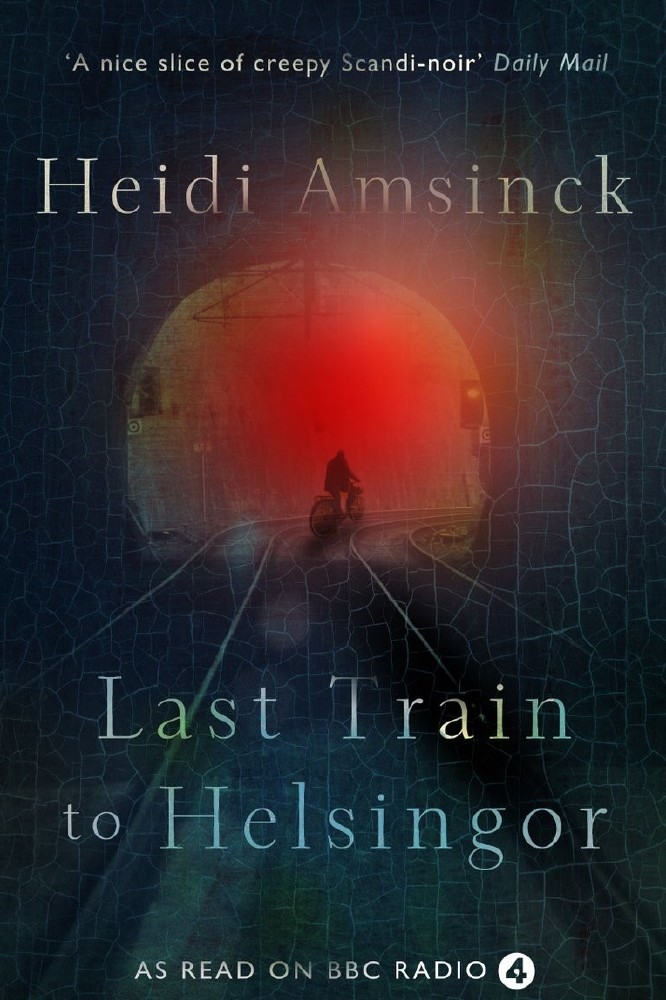Heidi Amsinck writes a piece for us upon the release of her story collection Last Train to Helsingør

Heidi Amsinck
Growing up Denmark, I was fascinated by all things ghostly and macabre. When I began to write fiction, I tried earnestly to tackle ‘serious’ topics, dismissing my twisted tales as guilty pleasure. Only when I accepted this as my true voice did I begin to make headway as an author. So here are my top tips for writing on the dark side:
Read voraciously
As a child, I was obsessed with the fairy tales of the Brothers Grimm, the gorier, the better. I moved on eventually, to Edgar Allan Poe, Stephen King, M.R. James, Bram Stoker – anything as long as it was dark – but my writing retains an echo of that first, gothic inspiration. These days, I love the work of writers such as Susan Hill and Michelle Paver. If you’re looking for an introduction to the genre, I’d warmly recommend Ghostly, a fabulous anthology by Audrey Niffenegger.
Think ‘What if?’
OK so that’s how all fiction begins, but I like to play around with what might happen if a place of safety, or a frail and weak person, or an easy opportunity, turned out to be anything but. In my story The Wailing Girl, a tour guide with ulterior motives hires an actress to haunt a castle, but gets more than he bargained for. And in my title story, Last Train to Helsingør, a lawyer who has fallen asleep on the train and woken up in a railway siding, is relieved to find himself in the home of two “eccentric old sisters”. Alas, they are not what they appear to be (I have a thing for little old ladies with sinister intents).
Focus on setting
Most of my ideas are sparked by places that evoke a sense of darkness and mystery in me. A few of my stories are set in spooky, wood-panelled apartments in Copenhagen, but any location might set me off. My story The Chanterelles of Østvig unfolds in a secluded pine plantation on Denmark’s far north coast. It’s a place I know well, and the silence of the forest paths has always unsettled me deeply.
Take note
I carry a notebook with me everywhere, and spend ages jotting down ideas before starting a new story: page upon page of rambling description and snatches of dialogue, interspersed with shopping lists and memos to myself. I have stacks of filled notebooks on my shelves, and like to open them at random, rediscovering not only abandoned ideas – occasionally good, often terrible – but a snapshot of my life as it was.
Write alone at night
I am lucky enough to have a room of my own, and love working there late at night when everyone else in my house has gone to bed, and no sound can be heard, but the occasional fox or owl through the open window. Having an overactive imagination, I scare easily, though, and sometimes am so deeply immersed in whatever I am reading or writing that any random noise will send me fleeing from my desk in terror.
Read your work out loud
Many of the stories in Last Train to Helsingør were originally written for radio, which got me into the habit of reading all drafts out loud to myself. This helps me spot where the rhythm falters, or where fewer words will do the same job. It’s also a great way of flushing out the kind of errors and repetitions that you become blind to after staring at the same story for months on end.
Play with ghosts
There are several legends in my family of people having been visited by the dead. My grandmother liked to tell the story of how she once turned to find her late husband sitting beside her in church, clear as day. Disappointingly, I have never seen a ghost myself, though I keep an open mind. In my stories, I like to hint at a natural explanation, leaving it up to the reader what to believe.
Walk everywhere
I believe passionately in the healing power of walking in nature. Even more so after I was struck by serious illness last year, and daily rambling in the company of close friends was the only thing that made me feel noticeably better. It is also when walking that I get my best ideas, or untangle stories that have tied themselves into knots, something which happens to me a lot.
Rewrite, rewrite, rewrite
It can take me three years, sometimes longer, to complete a story. I might write it from start to finish in a passionate rush, then quickly fall out of love with it. Or I might not know where to begin and waste weeks staring at a blank page. Whatever happens, I almost always find I have to put a story away for a good few months, before it will come right. Even then, there is no finishing line when everything becomes perfect, just a point at which I decide to stop editing.
Never give up
I have written stories since I was a child, and hope I never have to stop. I write the sort of stuff I like to read, or try to. Years ago, I was fortunate enough to be given a chance on BBC Radio 4’s Time Being series for new writers, which sparked a string of stories for radio, and eventually a book. But I like to think I’d be writing anyway, for the sheer, sweet, agonising pleasure of it.

Last Train to Helsingør by Heidi Amsinck (published by Muswell Press 1 February 2017, RRP £10.99 paperback, RRP £4.99 e-book), is available to purchase from online retailers including amazon.co.uk and to order from all good bookstores.

